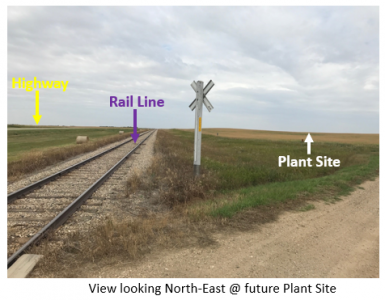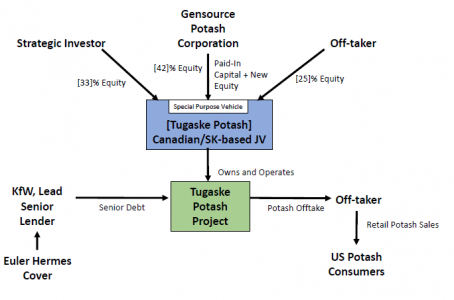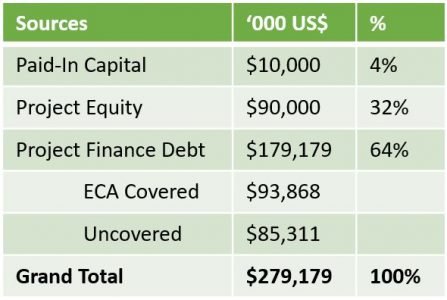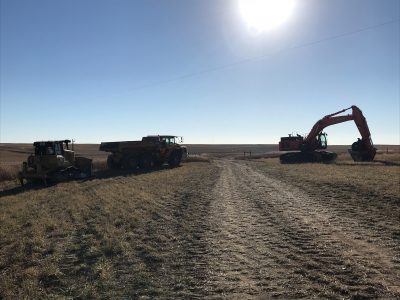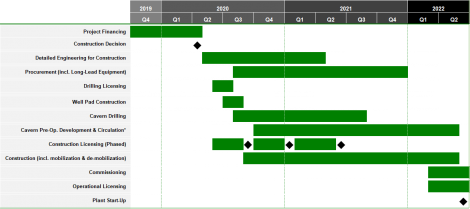Vanguard Area Projects
The Property
- 100% owned Vanguard property in central Saskatchewan
- 170km South of Saskatoon, 150km North-West of Regina (Saskatchewan’s two largest cities) on provincial highway system
- Comprises of two subsurface mineral leases, KL 244 and KL 245
- surrounding the villages of Tugaske (RM of Huron No.223) and Eyebrow (RM of Eyebrow No.193)
- Two (2) cored exploration wells from previous permit holder, completed in 2012, plus over 100 km of 2D Seismic
- Gensource exploration activities:
- Four (4) cored explorations wells, as of December 2019
- 3D seismic program covering over 34 km2 within KL 245
- Over 70,000 acres of subsurface mineral rights available for mining
- Centuries worth of potash available, to accommodate many Gensource modules
- Close proximity to essential utilities and services (rail, road, gas, power, aggregate, etc.)
- Key infrastructure required for construction and operations is in place and very accessible
- Mostly agricultural land, cultivated, with few environmentally sensitive areas
- Strong local, community, and provincial support
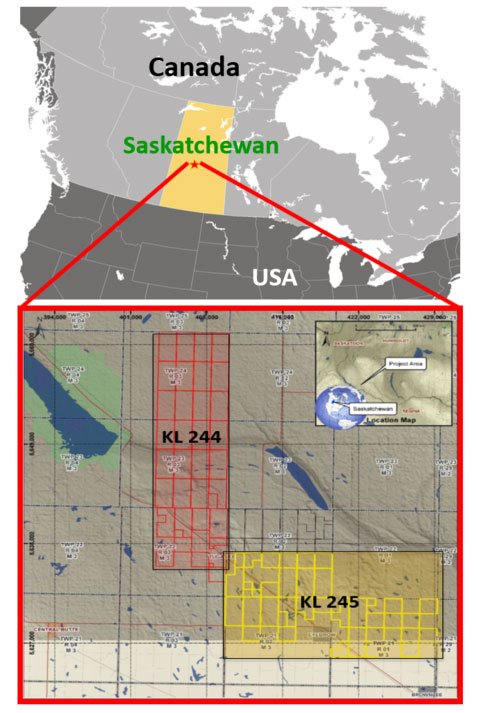
Concept (Key Differentiators)
- Small scale production facility(ies) with a minimum target production rate of 250,000 tonnes per annum (t/a)
- Modules can be scaled-up as desired, custom-built to the customer’s requirements
- Solution mining using selective dissolution with an enhanced (and patented) process recovery technique, enables a smaller footprint, reduced environmental impact, and positive economics (even in low commodity prices)
- Cooling crystallization with high energy-efficiency
- Environmental impact will be minimal compared to typical potash mines
- No tailings created
- No surface brine ponds
- This enables a faster environmental assessment and permitting process
- No freshwater or surface water required for mining – lower quality brackish ground water is sufficient.
- Processing and other water will be sourced from other ground water sources.
- Facility is scalable, and several plant site “modules” can be constructed in a small area
- Adding synergies across modules and enhancing the value proposition for module owners and Gensource shareholders
- Potash production is “pre-sold” under Gensource’s vertical integration business model.
- Mitigates marketing risk
- Direct-ship transportation to pre-identified end user, either in bulk or bulk-in-container, via rail to tidewater (East or West), ocean freight
- Well connected to existing rail lines for distribution/shipping within Canada and the US
- Lightning fast project development timelines as compared to traditional potash projects
- Gensource can move a module from concept to production in less than 3 years
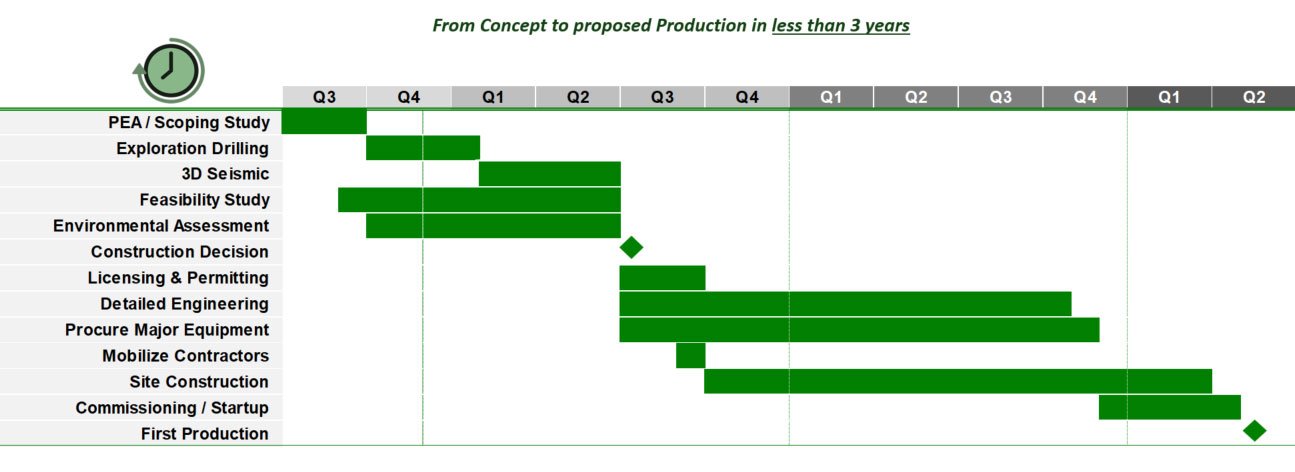
Gensource Small-Scale, Selective Solution Mining “Module”
Gensource is NOT a traditional/conventional Potash Mine. A Gensource module has the following advantages over other types of potash mines.
A Gensource module is: Small
- Each module is an independent unit, economic on it’s own, and is designed to produce min. 250,000 tonnes per year of salable potash (this is approximately 1/10th of the annual production of a typical potash mine in Saskatchewan)
- A module is “right-sized” for rural Saskatchewan: Smaller consumption of utilities, and lower impact on community infrastructure
- Entire site footprint is only a few hundred metres across and can fit on just over 20 acres
Gensource Module “Fly through”
Take a virtual tour of a Gensource module, getting a “birds eye” view of the entire plant site – seeing the small-scale nature of the potash processing facility and associated infrastructure.
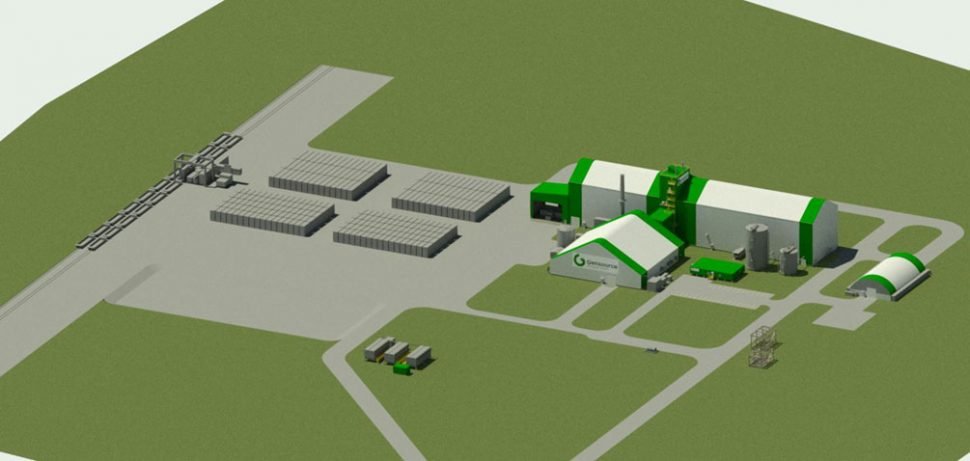
A Gensource module is: Scalable
- Layout can accommodate doubling of capacity, without a footprint increase
- Existing layout can accommodate 2 weeks of production storage in shipping containers, and a second 250,000 t/a module if desired (bringing total annual production to 500,000 t/a)
- Alternatively, the process can be scaled-up, and one larger 500,000 t/a module can be constructed
- In either scenario, the overall CAPEX $/tonne and OPEX $/tonne are decreased; making for even better economics

A Gensource module is: Repeatable
- Gensource’s Vanguard Area can support several projects or modules (i.e. Vanguard One, Two, Three, Etc.). As such, Gensource is advancing the development of several vertically integrated, small-scale, potash production “modules” in its “Vanguard Area”
- Each module can be an independent Joint Venture (JV), or a JV may decide to own multiple modules
- Gensource will have an equity stake in ALL JV’s, and will operate these modules
- Multiple modules allow for operating synergies

A Gensource module is: Clean
A Gensource project will have a small footprint, due to:
- No salt tailings or brine structures (i.e. ponds) on surface
- Brackish groundwater compatible for mining
- Self-generating power (Natural Gas Boiler/Steam Turbine Generator – cleaner than purchasing grid power, which is primarily coal-fired (net GHG reduction)
- Layout can accommodate doubling of capacity, without a footprint increase
- “Right-sized” for rural Saskatchewan
- Smaller consumption of utilities, and lower impact on community infrastructure
Gensource has achieved a significant environmental assessment milestone, receiving a Ministerial Determination from the Saskatchewan Ministry of Environment of “not a development” for their small-scale project. This is the first potash project to ever receive this positive assessment, which means that:
- Gensource is not required to complete a full Environmental Impact Assessment (EIA), since it has been recognized that the project has a number of positive environmental attributes
- the project will not trigger the stringent criteria of the Saskatchewan Environmental Assessment Act
- the project is unlikely to have a significant impact on the environment
- this notification officially confirms that the project can now proceed to the next stage of the environmental regulatory process: detailed construction licensing
A Ministerial Determination of “not a development” is a fantastic outcome for Gensource. It not only confirms one of our core values as a company – to provide a cleaner source of potash production – but it is also a crucial element to the success and value proposition of our small-scale approach; as it enables a much faster, more efficient and cost-effective overall project development timeline.
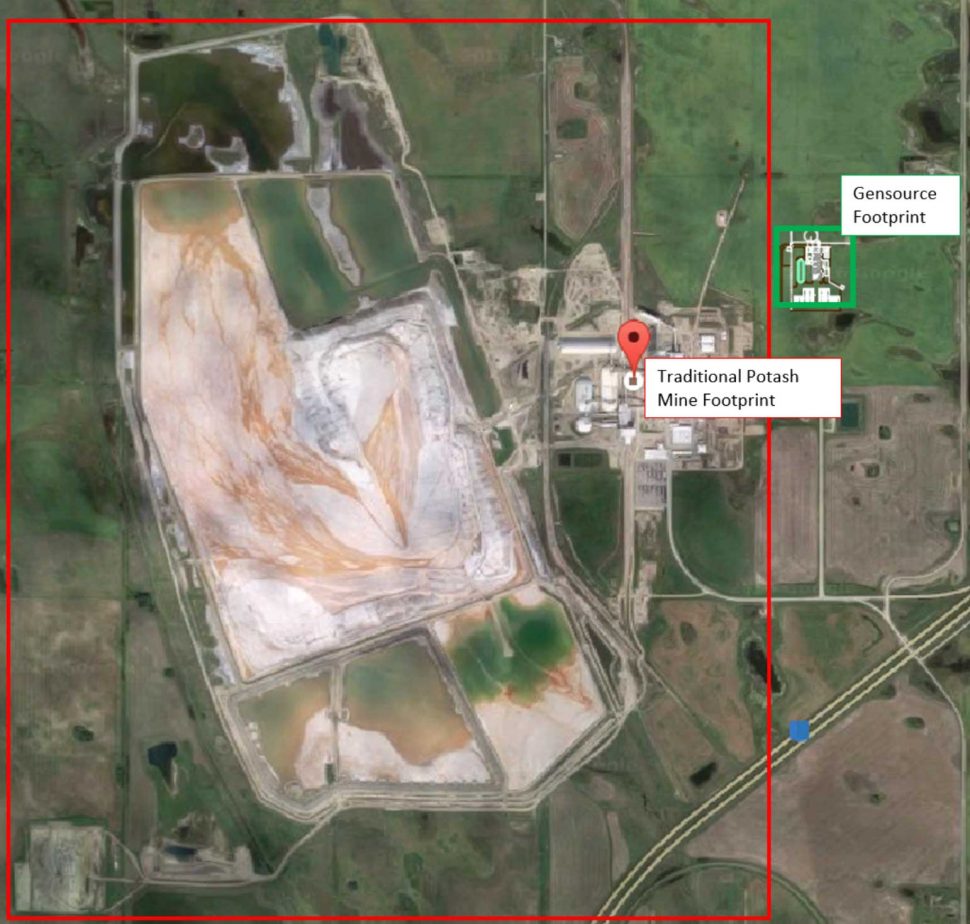
Source: Google Earth, modified by Gensource
These features are all enabled by Gensource’s innovative selective solution mining and enhanced potash process & recovery technique.
Tugaske Project
On October 10, 2019 in a news release Gensource formally introduced the Tugaske Potash Project (the “Tugaske Project” or the “Project”) as the official name for the project formerly referred to as Maverick. In this matter, Gensource is staying true to the Saskatchewan tradition of naming potash operations after the nearest community (in this case, the nearest community is the Village of Tugaske in the RM of Huron No.223).
Project Summary:
The Tugaske Project will be developed on Gensource’s wholly owned Vanguard Area. Similar to other Gensource module designs, the Tugaske Project will produce a minimum of 250,000 tonnes of saleable muriate of potash (MOP) product annually. 100% of the product from the Tugaske Project is spoken for by an “offtaker”, and will be sold into the US market – as such, it is planned that the facility will produce a granular MOP product.
This greenfield construction project has a minimal footprint, and the necessary surface land to construct the plant site is under Gensource control. The Vanguard Area has excellent and immediate access to key infrastructure required for construction and operations (i.e. close proximity to both highway & rail access, natural gas, power, water, aggregate, etc.). The future plant site will be constructed on cultivated farm land, which has no environmental sensitivities/concerns. With the environmental assessment approval already complete, the Project is ready to proceed to construction licensing/permitting – which will advance upon securing project financing.
Ownership Structure:
- In a news release dated May 22, 2019, Gensource announced it entered into a non-binding Memoranda of Understanding (MOU) to form a joint venture company (“JVCo”) to develop the Project within the Vanguard Area. The JVCo will construct, own and operate the potash production facility. The parties to the JVCo have reached an agreement in principal on offtake amount, duration of offtake, equity contribution and JVCo’s operating structure (View)
- In a news release dated October 15, 2019, Gensource announced the closing of a royalty sale on the Project to the Strategic Investor and Off-taker (members of the JVCo), the proceeds of which will be utilized to advance the Tugaske Project to completion of the project finance stage. This announcement was particularly important because it allows the future equity owners of the Project to invest their risk capital in the Project at the current stage. The Royalty Agreement underscores the belief in, and commitment to the Project, by both of the royalty owners. (View)
- In a news release dated October 18, 2019, Gensource announced that it has formally mandated KfW IPEX-Bank GmbH (“KfW IPEX-Bank”) to act as Lead Arranger for the senior debt component for the Project. KfW IPEX-Bank is an affiliate of KfW Bank Group and is headquartered in Frankfurt Germany. (View)
Financial Summary:
Project Status:
- A “Shovel Ready” Project
- Feasibility complete
- Environmental Assessment complete
- Plant Site Land Option Agreement in place
- Offtake agreement underway
- Equity Partners identified and shareholder agreement underway
- Lead debt arranger mandated
- Alignment/agreement with key project execution companies (Engineer, Contractor)
Next Steps:
- Complete Project Financing (incl. Financial Due Diligence)
- Use JV cashflow for initial project activities
- Financial close/debt facility completion
- Full procurement and construction activities initiated
Vanguard One Project
Work to date:
- Completion of an NI43-101 Technical Report on Inferred Mineral Resource & Exploration Targets – April 2016 (View)
- Publishing of a Preliminary Economic Assessment (PEA) – July 2016 (View)
- Completion of two-well potash exploration & coring program – January 2017 (View)
- Completion of an NI43-101 Technical Report on the Updated Resource – February 2017 (View)
- Completion of 3D Seismic Program, covering approximately 35km2 of KL245 – March 2017 (View)
- Completion of a full bankable Feasibility Study for the Vanguard One Project – May 2017 (View)
- Completion of an NI43-101 Technical Report, Summarizing the Feasibility Study – July 2017 (View)
- Re-filing of NI 43-101 Technical Report – February 2018 (View)
- Environmental Assessment Milestone Achieved – August 2018 (View)

Next Steps:
- Confirming construction financing and moving the project to the next phase of development
- Initiate detailed engineering
- Initiate procurement for key long-lead items
- Obtain construction licenses/permits
- Initiate cavern drilling
- Mobilize contractor for first construction activities (i.e. site civil and earthworks)
